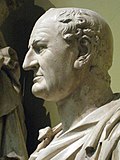
This is a list of wars of succession in Europe .
Note: Wars of succession in transcontinental states are mentioned under the continents where their capital city was located. That means that wars of succession in the Byzantine Empire and Ottoman Empire are found here whenever their capital city was located at Constantinople/Kostantiniyye/Istanbul in East Thrace; for Ottoman wars of succession before 1453, see List of wars of succession § Medieval Asia. Names of wars that have been given names by historians are capitalised; the others, whose existence has been proven but not yet given a specific name, are provisionally written in lowercase letters (except for the first word, geographical and personal names).





















